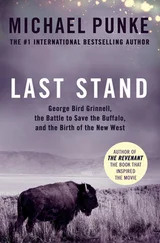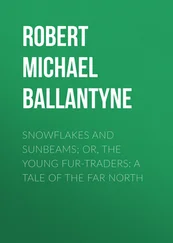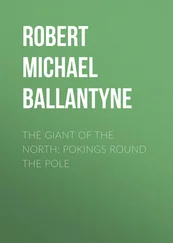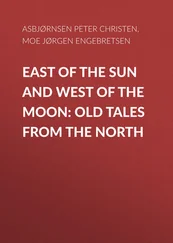To lower the new cable into the Granite Mountain shaft, the crew planned to use the mechanical strength of the third hoist, the chippy. This necessitated the labor-intensive act of lashing the cable to the chippy’s lowering rope (the rope on which the cage itself was pulled up and down). As the first 500 feet of cable was lowered, the crew tied the cable and the lowering rope together with hemp lashes at ten-foot intervals. After the first 500 feet, the crew tied lashes every five feet to compensate for the ever-increasing weight. 2By the time the entire cable was tied to the chippy’s rope, nearly 200 lashes were in place.
The crew had worked for sixteen straight hours before the lower end of the cable finally came even with the 2,600 Station. Sometime before 8:00 P.M., the men were about ready to begin threading the cable toward the site for the new transformer when they noticed a problem. The bottom 200 feet of cable appeared to be “coiled around the hoisting rope.” Before snaking the cable into the 2,600 Station, the crew decided to make an attempt at straightening out the kinks.
One of the men came up with the idea of removing some of the lower lashings. The hope was that the three-ton cable, if freed from its lower bindings to the hoisting rope, would untwist itself—the way kinks unwind from a tangled telephone cord.
The details of how the crew went about releasing the hemp ties are vague. It appears, however, that two or more of the men scaled the shaft walls and began cutting or untying the lashings. Adding to the precariousness of their task was the fact that the hoisting rope was smeared with lubricant to help it spool and unspool more easily.
Whether or not the kinks began to unwind is unclear. What is clear is that as the men of the cable crew worked around 8:00 P.M. on Friday night, they noticed that the three-ton cable suspended above them was slipping. Then, in a heart-sinking moment, they realized it was falling down.
The crew made a mad scramble for cover and “had scarcely reached the safety on the station before the cable fell.” As they huddled in the 2,600 Station—which opened directly to the shaft—the men heard and felt the thunderous roar of the falling cable. It bounced and scraped for hundreds of feet along the timbers of the narrow shaft, ripping every impediment in its path. Air hoses and water pipes were pulled off their brackets, adding the high-pitched scream of twisting metal. Finally the cable became caught in the shaft, piling up in a giant, tangled clump between the 2,400 and 2,800 levels—above, below, and beside the cringing cable crew at the 2,600 Station.
There must have been a palpable pause when the crashing finally stopped, one of those suddenly quiet, postcalamity moments in which accident victims take shocked inventory of themselves and their surroundings. Eventually the crew moved hesitantly toward the shaft, their lanterns barely able to penetrate the thick dust thrown up by the falling cable.
The cable was ruined. The violent fall had scraped away half of the lead sheathing, exposing large sections of the oil-soaked cloth insulation. After they inspected the snarled pile, it was obvious to the men that the giant wire could no longer carry an electrical current.
By then it was 10:00 P.M., and the crew had been working for eighteen straight hours. In no mood to begin the difficult task of removing the ruined cable, they headed for the surface.
Burton K. “B.K.” Wheeler, Butte’s thirty-five-year-old federal district attorney, was a man in an unenviable position. Wheeler’s job was to enforce federal law, and Butte, Montana, on the eve of the North Butte disaster was a volatile, messy jumble of antiwar protest, an abusive corporate master, seething labor unrest, divisive ethnic tension, and radicalism both left and right. It was a powder keg lacking only a spark, and in the days surrounding the disaster, multiple conflicts would converge and explode. B.K. Wheeler would ride through the center of this firestorm, then carry its legacy in the decades to follow.
Only two months earlier, in April 1917, the United States had waded into the bloody fray of World War I. For Butte, one immediate effect of the conflict was the widening of ethnic fissures. Butte was a microcosm of Europe, and Europe was at war. German immigrants opposed fighting against their recent homeland, where many of their families still lived. The English and the French, by contrast, cheered America’s alignment with their countrymen. The Irish, with historical animosity toward England, stood in bitter opposition to an American alliance with the British. The Finns, strongly socialist, saw the war as a scheme to “break the power of the people of Russia.” 3War also led to an increase in immigration from eastern and southern Europe, and all of Butte’s then-current inhabitants resented the influx of Italians and Slavs, who as the newest wave of immigrants were willing to work for the lowest wages.
Leftists marched in opposition to the “rich man’s war, poor man’s fight” and plotted the downfall of the capitalist system. Rightists launched a hunt for “Shadow Huns” and changed the names of German foods. In the approved parlance, hamburger became Salisbury steak, frankfurters became hot dogs, and sauerkraut became liberty cabbage . 4
An early flashpoint in Butte centered on registration for a new draft, with Registration Day falling on June 5, 1917—only three days before the North Butte disaster. Butte war opponents, led by the Finns and Irish, circulated handbills screaming “WAR IS HELL. WE DO NOT WANT IT” and “DO NOT REGISTER.” “[W]e are,” warned the handbills, “at the behest of the money powers, to be taken forcibly to kill and be killed.” 5The draft even threatened to reignite problems with the Indians. Butte newspapers ran a wire story reporting that antiwar protesters included the Cheyenne, who were “holding war dances and threatening violences.” 6
The responsibility to enforce the draft law seemed an odd match for District Attorney B.K. Wheeler. As a Quaker, he had his own considerable misgivings about American involvement in the war and had established his young career by representing Butte’s working-class men—usually against “the money powers.” Yet as the federal district attorney, Wheeler took seriously his responsibility to enforce the law and issued a tough statement on the eve of Registration Day. “Any man within the draft age who is heard making the remark that he will not register will be warned during the day by the Attorney’s force. If he has not registered by nine P.M., he will be taken promptly to jail.” 7
Wheeler’s tough tone dissuaded some but not all. On Registration Day, a group of Finns and Irish led a protest march of as many as 2,500 people. Antiwar speeches were delivered in English and in Finnish before the Butte mayor addressed the crowd (from the top of a building), demanding it disperse. The order was met with jeering and boos that quickly degenerated into rioting, leading police and sheriff’s deputies to fire shots into the air and then wade into the crowd with clubs and long nightsticks. When the rioters still failed to disperse, the National Guard was called in. Forty soldiers with rifles and fixed bayonets “came at a run” from an encampment on the edge of town. Finally the riot broke up, with twenty men and one woman arrested. 8
“The draft riots were forgotten three days later when fire broke out,” remembered Wheeler. 9Forgotten for a time, though the riot offered a preview of the broader ramifications of the disaster that was about to erupt—a disaster that would envelop Wheeler’s long career in ways that he could not possibly foresee.
As they ascended the shaft, the members of the cable crew no doubt felt a mixture of relief and trepidation. They knew they were lucky to be alive, but there would be serious consequences for their role in ruining a valuable piece of mine property. The cable cost more than $5,000—the equivalent of a year’s wage for four men. 10
Читать дальше












